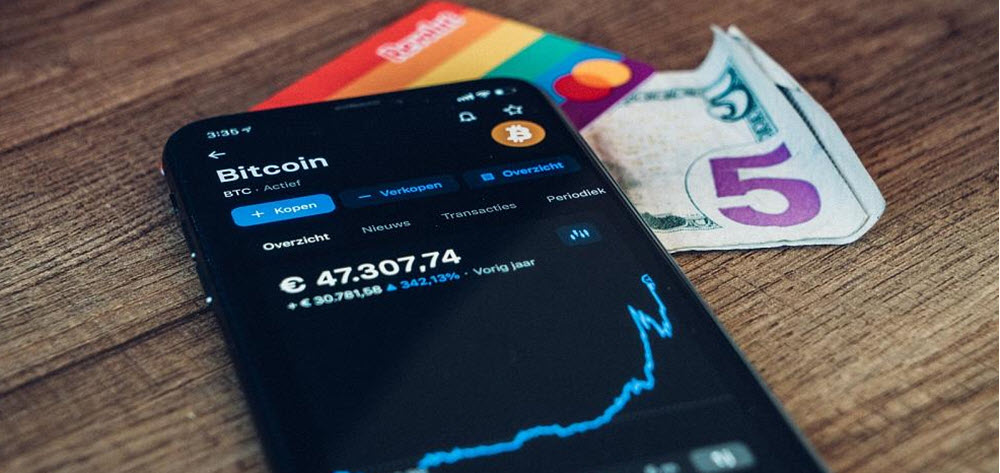 Bitcoin is the most famous of the cryptocurrencies and also the one with the largest market capitalization and transaction volume. If an online vendor or service provider accepts any cryptocurrencies, Bitcoin will most likely be included in the list. This is for instance true for most of the online casinos, online brokers (for CFD, forex, stocks, commodities, etc) and trading platforms that accept cryptocurrency deposits and withdrawals.
Bitcoin is the most famous of the cryptocurrencies and also the one with the largest market capitalization and transaction volume. If an online vendor or service provider accepts any cryptocurrencies, Bitcoin will most likely be included in the list. This is for instance true for most of the online casinos, online brokers (for CFD, forex, stocks, commodities, etc) and trading platforms that accept cryptocurrency deposits and withdrawals.
The network Bitcoin and the cryptocurrency Bitcoin (BTC) was launched in 2009 and Bitcoin is a pioneer in the field of cryptocurrency.
Using Bitcoin in an online casino
Examples of online casinos that accept Bitcoin
- FortuneJack
- Bob Casino
- mBit Casino
- Betcoin
Using Bitcoin to make an online casino deposit
1.) Make sure you are logged into the casino.
2.) Go to the banking section.
3.) Select deposits, and then select Bitcoin as your deposit method.
4.) Follow the on-screen instructions to provide the required information, including the transfer amount.
5.) Confirm the transaction.
Using Bitcoin to make an online casino withdrawal
1.) Make sure you are logged into the casino.
2.) Go to the banking section.
3.) Select withdrawals, and then select Bitcoin as your withdrawal method.
4.) Follow the on-screen instructions to provide the required information, including the transfer amount.
5.) Confirm the transaction.
Keeping BTC in an e-wallet
Bitcoins can be stored in several different ways, but using a Bitcoin-compatible digital e-wallet is very common. There are many different e-wallets to chose among, such as Coinbase, Trezor, Exodus, Mycelium, Ledger and SoFi.
The e-wallet will store data that you need to prove to the Bitcoin blockchain network that you are the owner of certain bitcoins. Some e-wallets store the information on your computer hard-drive, but there are also e-wallets that will give you space on their server instead. Both alternatives have their pros and cons.
Example of how a Bitcoin transfer takes place between two e-wallets:
1.) Erica wants to send 1 BTC to Enrique.
2.) Enrique gives his Bitcoin address to Erica. This address was generated by Enrique´s e-wallet. The address is only valid for one transfer.
3.) Erica gives her e-wallet instructions to transfer 1 BTC to the address she got from Enrique. The private key stored inside Erica´s e-wallet is used to generate a digital signature.
4.) The digital signature must be confirmed by the Bitcoin blockchain network for the transfer to take place. This involves the public Bitcoin key.
5.) After confirmation of the digital signature, 1 BTC is transferred from Erica´s e-wallet to
Enrique´s e-wallet.

About Bitcoin
Abbreviation: BTC (or XBT)
Symbol: Ƀ
Basic unit: 1 BTC
Sub-units:
- 1 millibitcoin (1 mBTC) is 1/1,000 bitcoin (10−3).
- 1 microbitcoin (1 μBTC) is 1/1,000,000 bitcoin (10−6).
- 1 satoshi is 1/100 million bitcoin (10−8).
How are new bitcoins created?
The Bitcoin system needs to computer power to work. You can devote computer resources to the network and be paid in newly created BTC. This is known as bitcoin mining. The computer power is used to verify and log bitcoin transactions on the bitcoin blockchain.
So far, the creation of new bitcoins have not lead to inflation against major currencies such as USD or EUR, because public interest in owning bitcoins have grown quicker than the mining pace.
History of Bitcoin
Development and launch
The basic concept and technical solutions for the Bitcoin network was made public anonymously in 2008 by the pseudonym Satoshi Nakamoto. This included the release of both software and a paper.
A small group of volunteers worked with the software and followed the instructions in the paper to create the Bitcoin network, and it was launched in January 2009.
Mainstream interest
At first, Bitcoin grew in the shadows and did not stir up much public attention, but the price people were willing to pay to purchase bitcoins did increase from year to year. In 2011, the price of 1 BTC reached 30 USD. Soon thereafter, the market price dropped down to just 2 USD, clear evidence of the cryptocurrency´s enormous price volatility.
When the Euro-crisis hit the headlines in 2013, it sparked a more mainstream interest in alternative banking and transaction solutions. Soon, Bitcoin was a household name around the world. The first university to accept tuition payments in Bitcoin was Nicosa University in Cyprus. In October 2013, the world´s first Bitcoin ATM started working in Vancouver, Canada.
Unsurprisingly, the increased interest in Bitcoin prompted an increase in market value. I late November, the exchange rate reached 1 BTC : 1000 USD for the first time.
